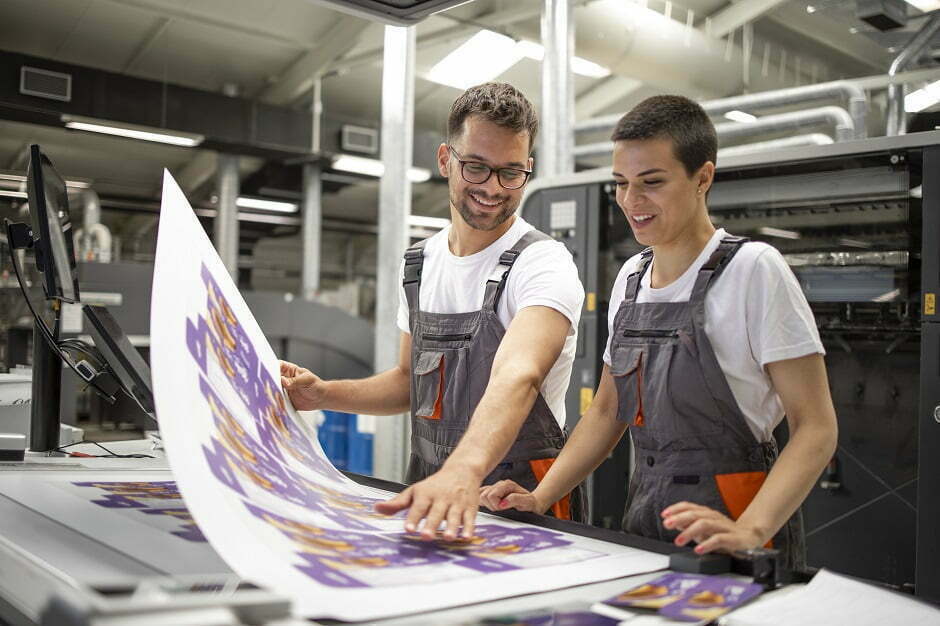Choosing the right printing method for your business cards is an important decision that can have a big impact on your professional image. Whether you should choose offset or digital printing depends on a variety of factors, including the design of your business card, the desired quantity, and the turnaround time. In this blog post, we’ll discuss the advantages of each printing method to help you make the best decision for your business cards.
What is Offset Printing?
Offset printing is a traditional form of printing that involves using a printing plate and an inked image to transfer the desired design onto paper. This process is commonly used for large print runs and is the go-to method for commercial printing jobs. Offset printing has been around for a long time, and it’s still widely used today due to its cost-effectiveness and consistent quality.
In offset printing, the image is first transferred to a metal plate, which is then covered in ink. The inked image is then transferred to a rubber blanket, which is then pressed onto paper, transferring the image onto the paper. It’s a two-step process that requires precision and careful setup, but the results are usually quite impressive.
Offset printing is ideal for high-volume jobs because it allows printers to create large numbers of prints quickly and efficiently. It’s also ideal for larger prints such as posters and brochures, which require a high degree of accuracy and consistency. The downside of offset printing is that it can be expensive, so it’s not suitable for smaller print runs.
What is Digital Printing?
Digital printing is a type of printing technology that uses a digital image or computer-generated file to create the printed output. This technology is relatively new, but it has quickly become the most popular choice for businesses, as it offers a number of advantages. With digital printing, images are created directly from a computer file, eliminating the need for films, plates, and other traditional printing materials.
Digital printing also provides a much faster turnaround time than offset printing, making it an ideal choice for businesses who need their materials printed quickly. Additionally, digital printing allows for more precise control over color accuracy, so images will look exactly as they are designed.
Which One Should I Use for My Business Cards?
When deciding between offset and digital printing for your business cards, there are a few factors to consider. Firstly, offset printing has the advantage of larger print runs, meaning it’s ideal for high-volume print orders. Digital printing, however, is better suited to smaller orders as it doesn’t require the same set-up time as offset.
Offset printing also offers a more consistent and vibrant color compared to digital printing, making it the go-to option for companies needing crisp logos and corporate branding on their business cards. Digital printing, on the other hand, can offer more flexibility in terms of customization and personalization – ideal for those wanting to add unique touches to their cards.
In terms of cost, digital printing is typically more economical for smaller orders, while offset printing may be more cost effective for larger orders. Ultimately, choosing between offset and digital printing for your business cards comes down to weighing up the pros and cons of both and finding the right solution for your needs.
Conclusion:
The conclusion is that both offset printing and digital printing are great options for creating business cards, depending on your budget and the design you have in mind. In either case, it’s important to get samples of each type from a print shop in Dubai before making a final decision to ensure that you are getting the best quality prints for your needs.

